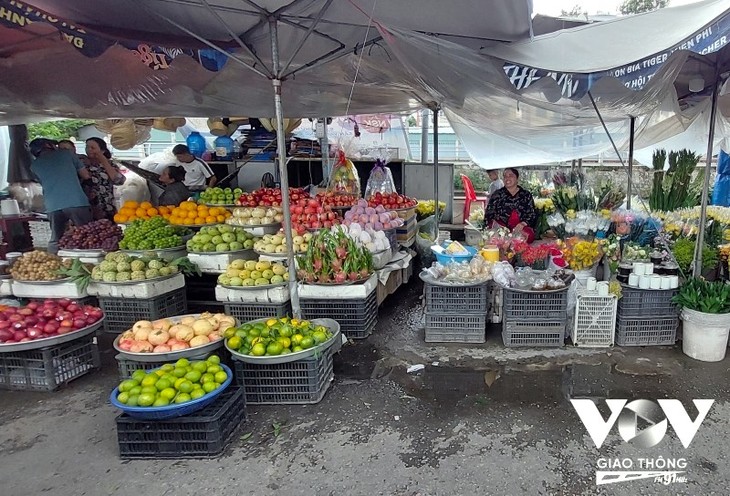(VOVWORLD) - Giong market used to be a busy trading center in the Go region, which is now Vinh Binh market in Tien Giang province. In early 19th century, Giong market attracted a large number of merchants from other localities selling a variety of goods.
 Vinh Binh market in Tien Giang province (Photo: Xuan Quang/ VOV Giao Thong) Vinh Binh market in Tien Giang province (Photo: Xuan Quang/ VOV Giao Thong) |
History books tell us that Go Cong area was once a barren land with few residents. In the middle of the 18th century, a man named Tran Van Hue came here to settle down and reclaim the wasteland.
Since then as a saying goes "Good land attracts birds", more people from other places came here to settle and do business. In 1815, Mr. Hue established Vinh Loi market, the first one in this area. But local people often called it Giong market. Giong meaning a strip of land higher than the surrounding area, desirable for living and farming without fear of flooding.
A resident named Truong Quoc Huy said: “The market is formed on the land owned by Mr. Hue. He had a large property and allowed people to come here for trading. People call it Mr. Hue’s Giong market.”
70-year-old Vo Thanh Suong said he knows all traders, their products, and their seats in Giong market.
“In the past, there were rows of large, square boxes. The fabric sellers arranged cloth on stalls during the day and packed it up in the boxes in afternoon. Those who sold food such as cakes and porridge opened their shops in the evening. Right at the end corner, there were two women selling fried rice cakes. A little further away was the place of the banh beo and banh bo cake sellers. A woman selling broken rice sat close to a woman selling sticky rice blended with mung bean, and a woman selling rice porridge.”
In the old days, people believed in deities who have supernatural power to give them a prosperous and comfortable life and bless them with favorable weather and bountiful crops.
Mr. Tran Van Hue renovated an old temple to worship the Vinh Loi village tutelary. Mr. Sương again: “In the past it used to be very crowded here, where every evening, people gathered for an outdoor movie screening. We also organized hát bội singing and played folk games. People from other places such as My Tho, Cho Gao, and Go Cong Dong also came here to enjoy festivities.”
When talking about Giong market, it’s a mistake not to mention banh gia, a famous cake of the Mekong Delta. Banh gia is made of rice and soybean flour, mung bean sprouts, shrimp, and pork.
Phan Thi Kim Phuong, who sells mung bean sprouts, at Giong market, said: “Banh gia is a popular cake here. On holidays, we cannot make enough cakes to sell. People even stuff banh gia into banh mi or bread to eat together. We can eat banh gia with rice dipped in soy sauce or with noodles and mustard green.”
For locals, Giong market is not only a place to sell and buy food, but also a venue for cultural exchange.